Boredom
A Social History of Wild Huckleberry Harvesting in the Pacific Northwest

Read it here.
Posted By: Paul - Wed Jun 10, 2020 -
Comments (2)
Category: Boredom, Customs, Daredevils, Stuntpeople and Thrillseekers, Food, Government, Regionalism
He Opens Doors
The YouTube channel "I Open Doors" is all about opening doors. Every day the guy who runs it (he remains anonymous) posts a short video of himself opening a door. It's usually a different door each day. He’s been doing this now for almost a year.His most popular video (below) shows him opening a toilet door in an airplane.
He only shows himself opening doors with his left hand, but he promises that if his channel ever reaches 100,000 subscribers he’ll reveal his right hand. As of now (Mar 2020) he’s at 513 subscribers. So he's got a ways to go.
You can read an interview with him at theverge.com.
Posted By: Alex - Thu Mar 26, 2020 -
Comments (1)
Category: Boredom, Video
Nothing Happens
Nothing Happens by Michelle and Uri Kranot from Michelle & Uri Kranot on Vimeo.
Posted By: Paul - Sat Dec 21, 2019 -
Comments (0)
Category: Ambiguity, Uncertainty and Deliberate Obscurity, Boredom, Crowds, Groups, Mobs and Other Mass Movements, Music, Cartoons
Minimum Wage Machine
Created by artist Blake Fall-Conroy:So, if this is installed in a museum, do people actually get to keep whatever money they get from it? I'm pretty sure some people would stand there cranking it all day.

Bad quality video of the machine in action:
via TYWKIWDBI
Posted By: Alex - Thu Oct 10, 2019 -
Comments (3)
Category: Art, Boredom, Money
Country Farming: Innovations of the Modern Tractor (1955-1959)
Nothing will probably ever beat TIMBER BRIDGE INSPECTION (reprinted below for newbies) as the gold standard for boredom, but twenty minutes of UK tractor talk comes close.
Posted By: Paul - Mon Aug 12, 2019 -
Comments (3)
Category: Agriculture, Boredom, PSA’s, United Kingdom
Putnik Ride
It's hard to see what this thing did, other than revolve around the fake Earth. Swing up and down, maybe? I assume there was a counterbalancing capsule on the other end of the boom.Plus, 300 riders per hour? Three in each capsule, as shown. Six total per "ride." That's fifty rides per hour, given filling and emptying the capsules. One minute swinging around at the end of a boom?
Surely one of the dullest rides ever invented.
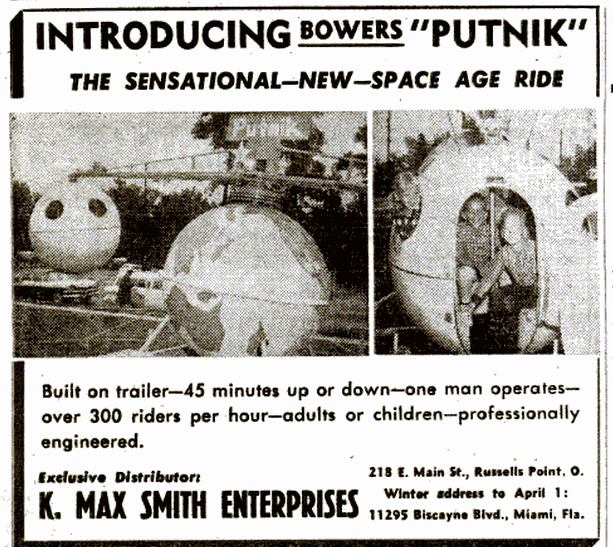
Source.
Posted By: Paul - Fri Dec 28, 2018 -
Comments (2)
Category: Boredom, Fairs, Amusement Parks, and Resorts, Spaceflight, Astronautics, and Astronomy, 1950s
Longest Trailer
Filmmaker Anders Weberg plans on releasing his great masterpiece Ambiancé in 2020. It'll clock in at 720 hours long (30 days). But to whet everyone's appetite, he released a trailer in 2014 that's a mere 7 hours and 20 minutes long.More info: thelongestfilm.com
Or you could watch the speeded-up version, only 1 minute long.
Posted By: Alex - Thu Sep 27, 2018 -
Comments (3)
Category: Boredom, Movies
Harvesting and Storage of Sorghum Silage
In our untiring quest to find the most boring material ever filmed or written, which began with "Timber Bridge Inspection," reposted below, we bring you the entire contents of a scintillating pamphlet.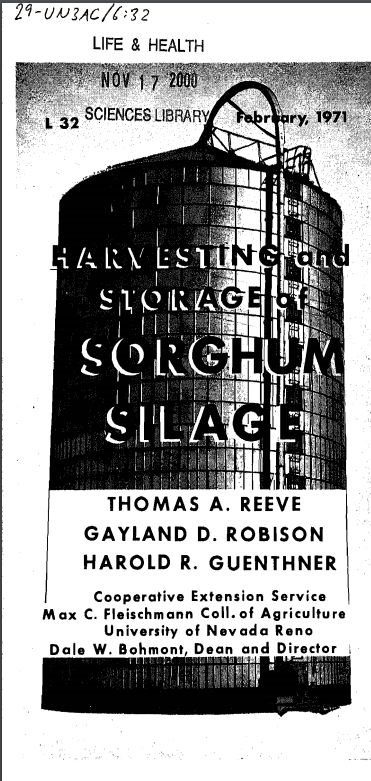
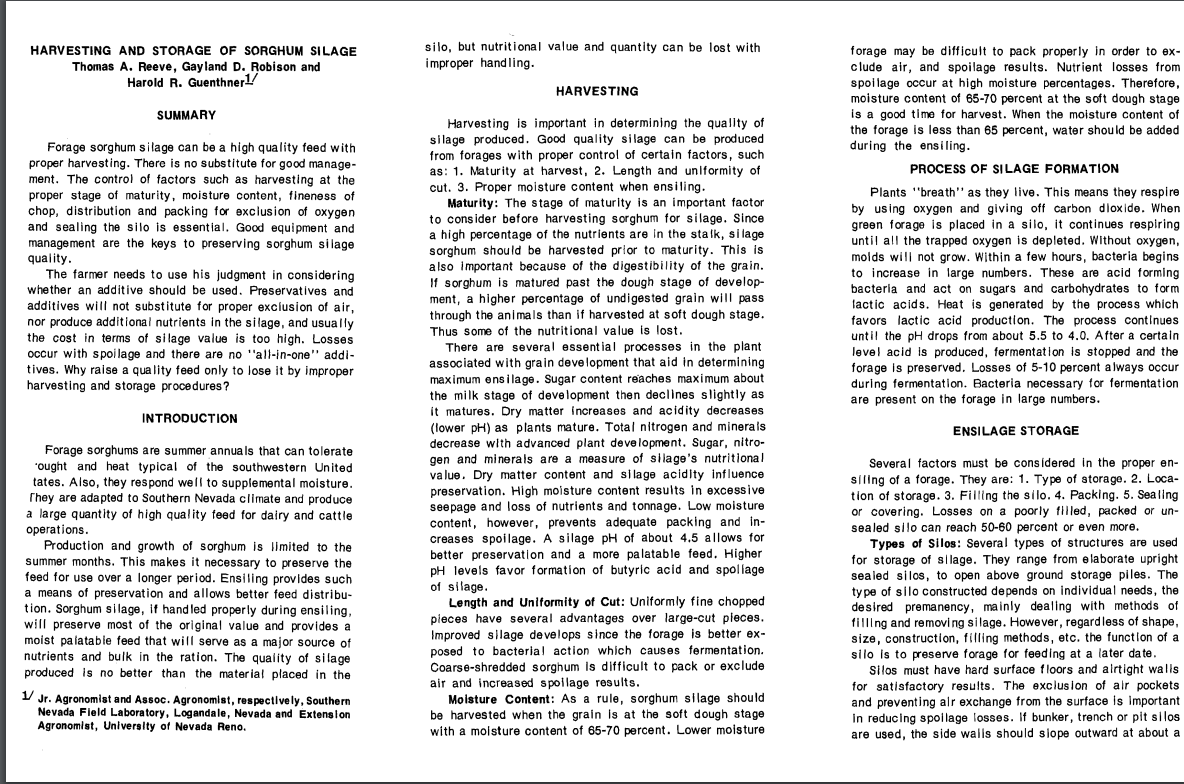
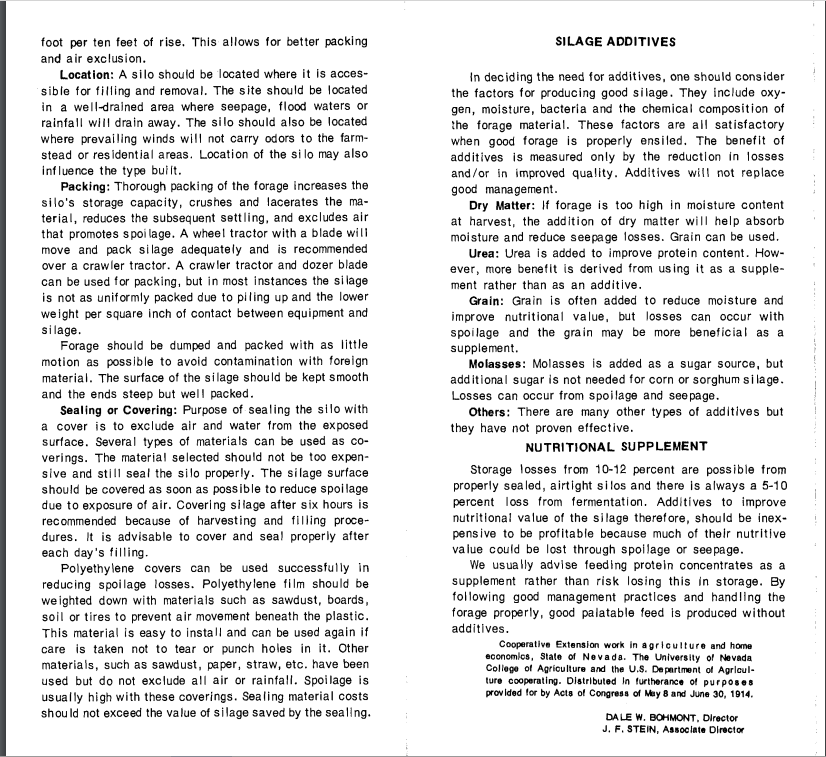
Original document here.
Posted By: Paul - Sat Jan 20, 2018 -
Comments (0)
Category: Agriculture, Boredom, Government, 1970s
On Horseback and By Highway: Administrative Facilities of the Wasatch-Cache National Forest, 1902-1960.
It's been way too long since we set the Gold Standard of Boredom with the TIMBER BRIDGE INSPECTION video.But maybe we can match it with this pamphlet. Feel free to read all 214 pages at the link.
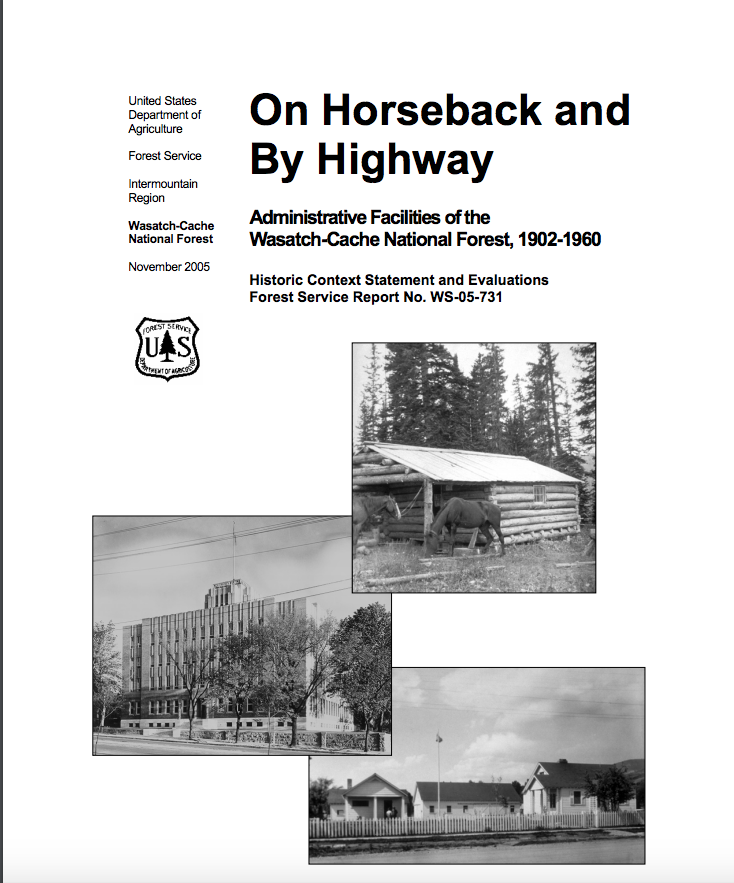
Posted By: Paul - Wed Nov 22, 2017 -
Comments (0)
Category: Boredom, Government, Twentieth Century
Vexations by Erik Satie
Eccentric composer Erik Satie wrote "Vexations," a four-line piece of music, around 1893, though that date is a guess because it remained undiscovered until his death in 1925. It was an unexceptional piece of music (by design), except for the instructions he attached that seemed to indicate that it should be played "840 times in succession" by a pianist who should "prepare oneself beforehand, in the deepest silence, by serious immobilities." It's not clear why he chose the number 840.It was first performed in September 1963 at the Pocket Theater in Manhattan. Composer John Cage arranged for a relay team of 10 pianists to play the entire thing, 840 times. The entire performance lasted 18 hours and 40 minutes.
There was a $5 admission fee for audience members, but you got 5 cents back for every 20 minutes you listened to it. Joel Meltz sat through the whole thing, so ended up getting a refund of $2.80.
It's subsequently been performed a number of times and is, of course, available on YouTube. Check out the video below of the guy who plays the entire thing, alone, in under 10 hours.
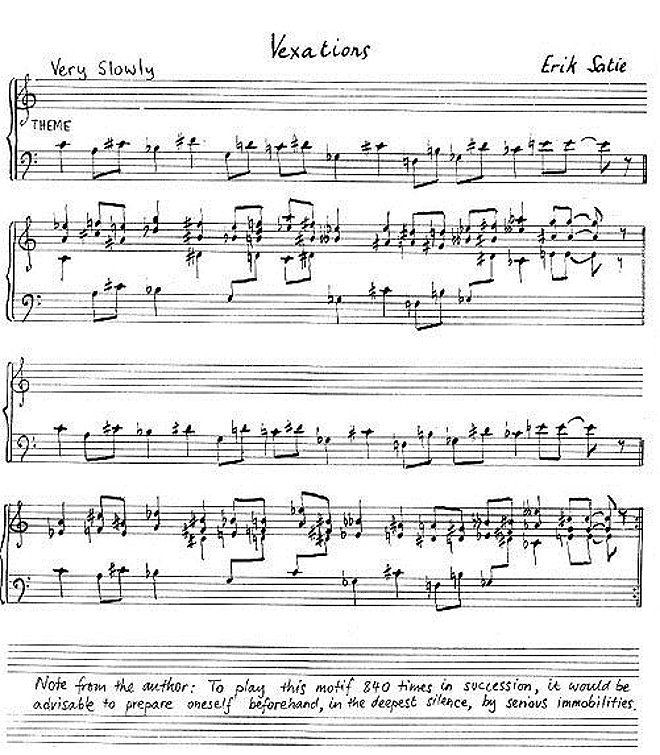
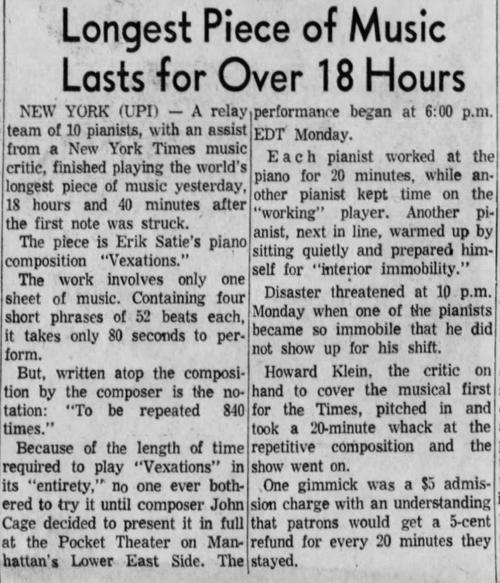
San Bernardino County Sun - Sep 11, 1963
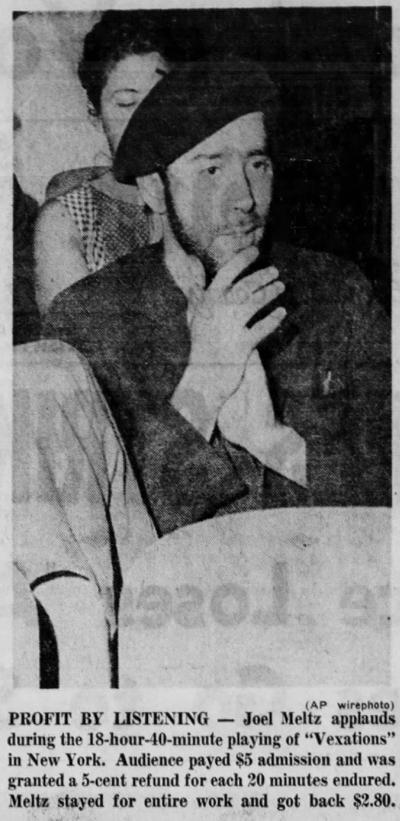
Posted By: Alex - Mon Apr 17, 2017 -
Comments (6)
Category: Boredom, Music, 1960s

| Who We Are |
|---|
| Alex Boese Alex is the creator and curator of the Museum of Hoaxes. He's also the author of various weird, non-fiction, science-themed books such as Elephants on Acid and Psychedelic Apes. Paul Di Filippo Paul has been paid to put weird ideas into fictional form for over thirty years, in his career as a noted science fiction writer. He has recently begun blogging on many curious topics with three fellow writers at The Inferior 4+1. Contact Us |




